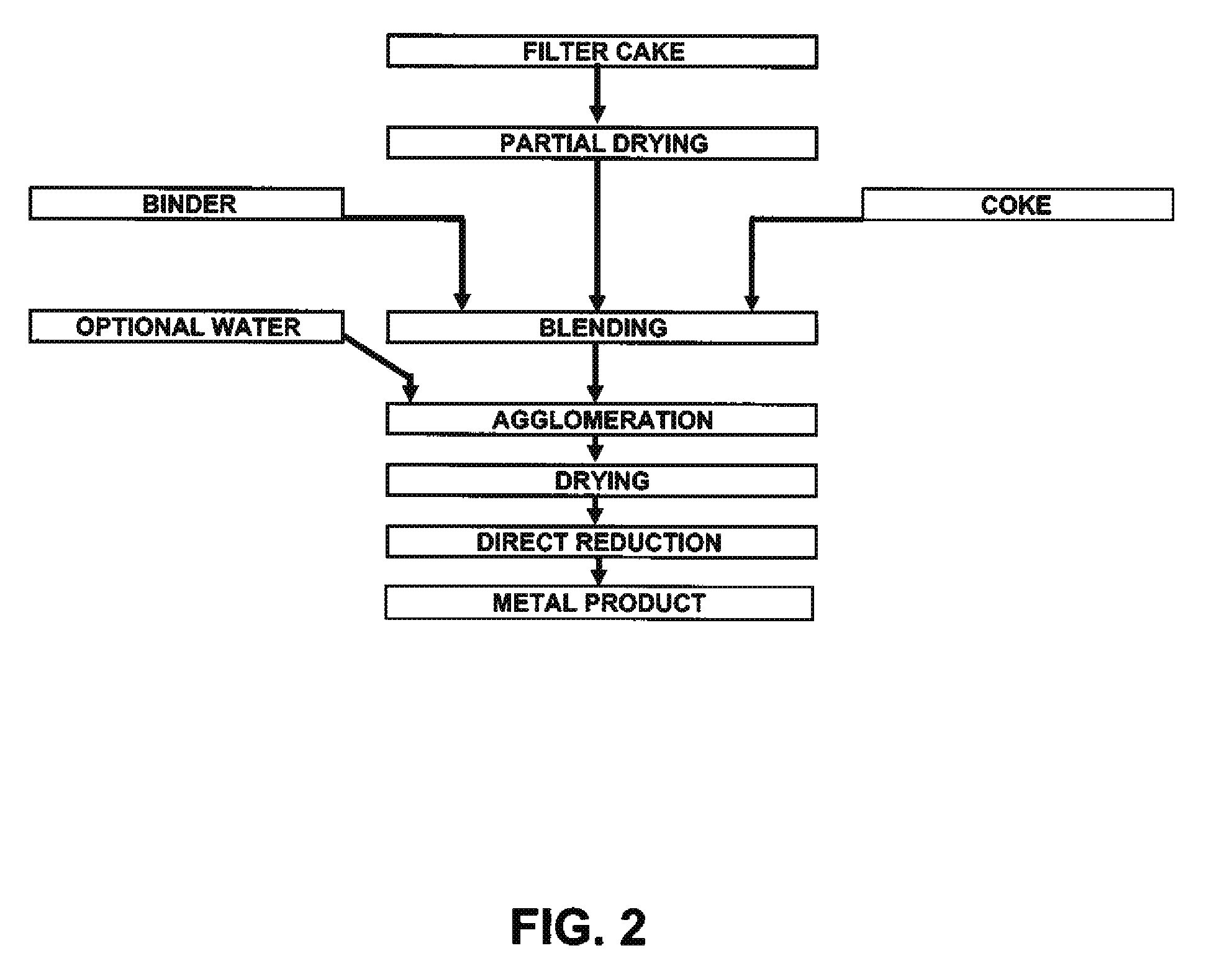Process for production of nickel and cobalt using metal hydroxide, metal oxide and/or metal carbonate
a technology of metal hydroxide and cobalt, which is applied in the direction of nickel compounds, cobalt compounds, inorganic chemistry, etc., can solve the problems of nickel oxide powder being known to be hazardous, application does not disclose any techniques for controlling or eliminating the potential for hazardous nickel oxide powder
- Summary
- Abstract
- Description
- Claims
- Application Information
AI Technical Summary
Benefits of technology
Problems solved by technology
Method used
Image
Examples
examples
[0031]Mixed hydroxide product (MHP) and nickel hydroxide product (NHP) are generally received from pressure or vacuum filtration as filtercake with over 50% free moisture. Feed preparation prior to pelletizing involves drying the filtercake to less than 20% moisture (though any lower than 15% moisture will cause excessive dusting) followed by milling of the precipitate to less than 200 mesh (or 74 μm) in a hammer mil.
[0032]Two different sources of precipitate were used: NHP samples and MHP samples. Assays for both are shown in Table 1. The major differences between the two sources are the significantly higher impurity concentrations in MHP.
TABLE 1Assay ResultsNiCoFeCaOAl2O3MgOSiO2SZnMnCNHP47.060.030.20.4-1.00.111.770.283.280.010.010.01MHP41.01.010.420.31.62.271.452.00.530.690-1.5
[0033]NHP is a very fine chemical precipitate consisting of smooth and spherical particles, which makes it hard to agglomerate without the use of binders and / or pressure. A typical size distribution of dry, ...
PUM
| Property | Measurement | Unit |
|---|---|---|
| temperature | aaaaa | aaaaa |
| temperature | aaaaa | aaaaa |
| temperatures | aaaaa | aaaaa |
Abstract
Description
Claims
Application Information
 Login to View More
Login to View More - R&D
- Intellectual Property
- Life Sciences
- Materials
- Tech Scout
- Unparalleled Data Quality
- Higher Quality Content
- 60% Fewer Hallucinations
Browse by: Latest US Patents, China's latest patents, Technical Efficacy Thesaurus, Application Domain, Technology Topic, Popular Technical Reports.
© 2025 PatSnap. All rights reserved.Legal|Privacy policy|Modern Slavery Act Transparency Statement|Sitemap|About US| Contact US: help@patsnap.com



